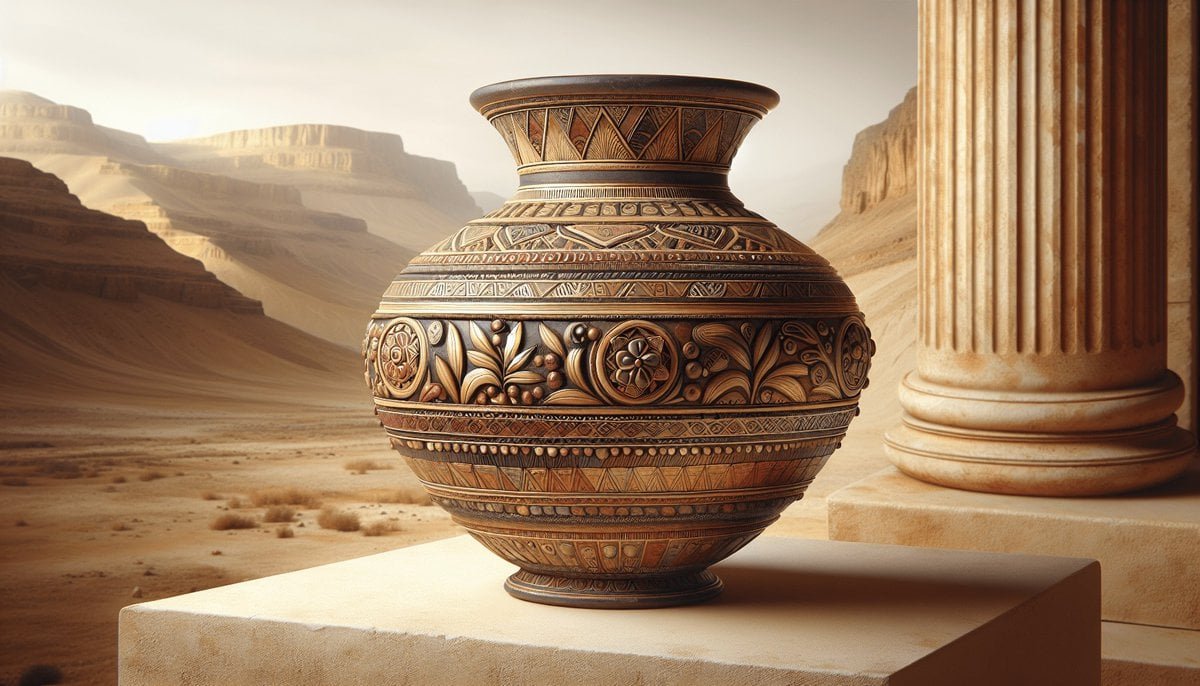Have you ever wondered what life was like in ancient Hebrew palaces? Recently, a groundbreaking archaeological discovery has opened an intriguing window into the royal lifestyle during the First Temple Period. This discovery not only enriches our understanding of history but also provides a tangible connection to the biblical past. The First Temple Period palace offers insights into the royal Hebrew lifestyle that once thrived in the ancient Near East. Through examining the context of this discovery, the archaeological evidence found, and its significance, you’ll gain a deeper understanding of this monumental find.
The Discovery Context
Biblical Reference and Historical Background
The First Temple Period, also known as the Iron Age II (circa 1000–586 BCE), is a significant era in biblical history, marked by the reigns of Kings David and Solomon and the construction of the First Temple in Jerusalem. Many biblical texts, such as the Books of Kings and Chronicles, describe the grandeur and sophistication of these ancient kingdoms. These texts provide essential context for understanding the royal lifestyle that this recent discovery seeks to illuminate.
Geographic Location
This newly discovered palace was unearthed in the strategic city of Jerusalem, specifically in its southwestern hill, an area that has been a focal point of archaeological interest due to its historical significance. Jerusalem served as the political and religious epicenter during the First Temple Period, making it an ideal location for exploring traces of royal life.
Recent Findings
The archaeological team, led by renowned experts in biblical history, uncovered a large fortified structure with distinct characteristics of a royal residence. This palace is believed to date back to the Iron Age II, around the 8th century BCE. The excavation revealed substantial remains, including pottery, iron tools, and remnants of opulent decorative elements that provide stark evidence of a sophisticated lifestyle.
Archaeological Evidence
Specific Artifacts
The excavation site yielded an array of artifacts that speak volumes about the daily life and status of its inhabitants. Ceramic vessels, notably storage jars and tableware, suggest domestic activities and possibly elaborate feasts held within the palace walls. Additionally, iron tools and weapons highlight the technological advancements of the period and the necessity for defense in this tumultuous era.
Dating Methods
Archaeologists employed several dating methods to ensure the accuracy of their findings. Radiocarbon dating of organic materials such as charred grains, coupled with pottery typology analysis, provided a reliable estimate of the palace’s age. These techniques confirmed the structure’s origin in the 8th century BCE, aligning it with the biblical accounts of Judah’s royal households.
Physical Descriptions
The palace’s architecture reflects the grandeur typical of royal residences. The fortified structure, with its thick stone walls and spacious courtyards, signifies not only a defensive strategy but also a showcase of wealth and power. Expert interpretations suggest that features such as the columned halls and decorative stone carvings illustrate a sophisticated aesthetic sensibility influenced by neighboring cultures.
The Significance
Biblical Implications
The discovery of this palace resonates deeply with biblical narratives, shedding light on some of the historical underpinnings of these ancient stories. This find bolsters the accounts of the First Temple Period, providing a physical dimension to the textual descriptions of a thriving and complex society underpinned by royal authority.
Historical Impact
Beyond its biblical connections, this discovery significantly impacts our understanding of the socio-political landscape of the ancient Near East. It underscores the cultural and technological advancements of the time and highlights Jerusalem’s crucial role as a hub of power and influence.
Modern Understanding
In contemporary terms, this discovery offers rich material for scholarly analysis and public interest alike. It serves as a critical piece in the ongoing puzzle of reconstructing ancient Hebrew life and contributes to the broader narrative of human civilization. Academics and enthusiasts gain a more nuanced appreciation of life during this historical period.
Research Status
Research on the palace continues as archaeologists and historians analyze the findings further. The site promises to yield more insights, with ongoing excavations likely to unearth additional layers of information. The importance of interdisciplinary collaboration is highlighted, as experts from various fields contribute to a comprehensive understanding of this critical discovery.
Conclusion
This First Temple Period palace not only enhances our understanding of ancient Hebrew royalty but also connects modern audiences to their biblical heritage. The artifacts and architectural features unearthed at the site offer a glimpse into a world where political, religious, and daily life were inextricably entwined. As future excavations continue, we anticipate even more revelations that will reshape our comprehension of this pivotal era. For you, whether a scholar or a curious reader, this discovery beckons further exploration into the rich tapestry of the First Temple Period. The intrigue of the past awaits your inquiry and engagement.






